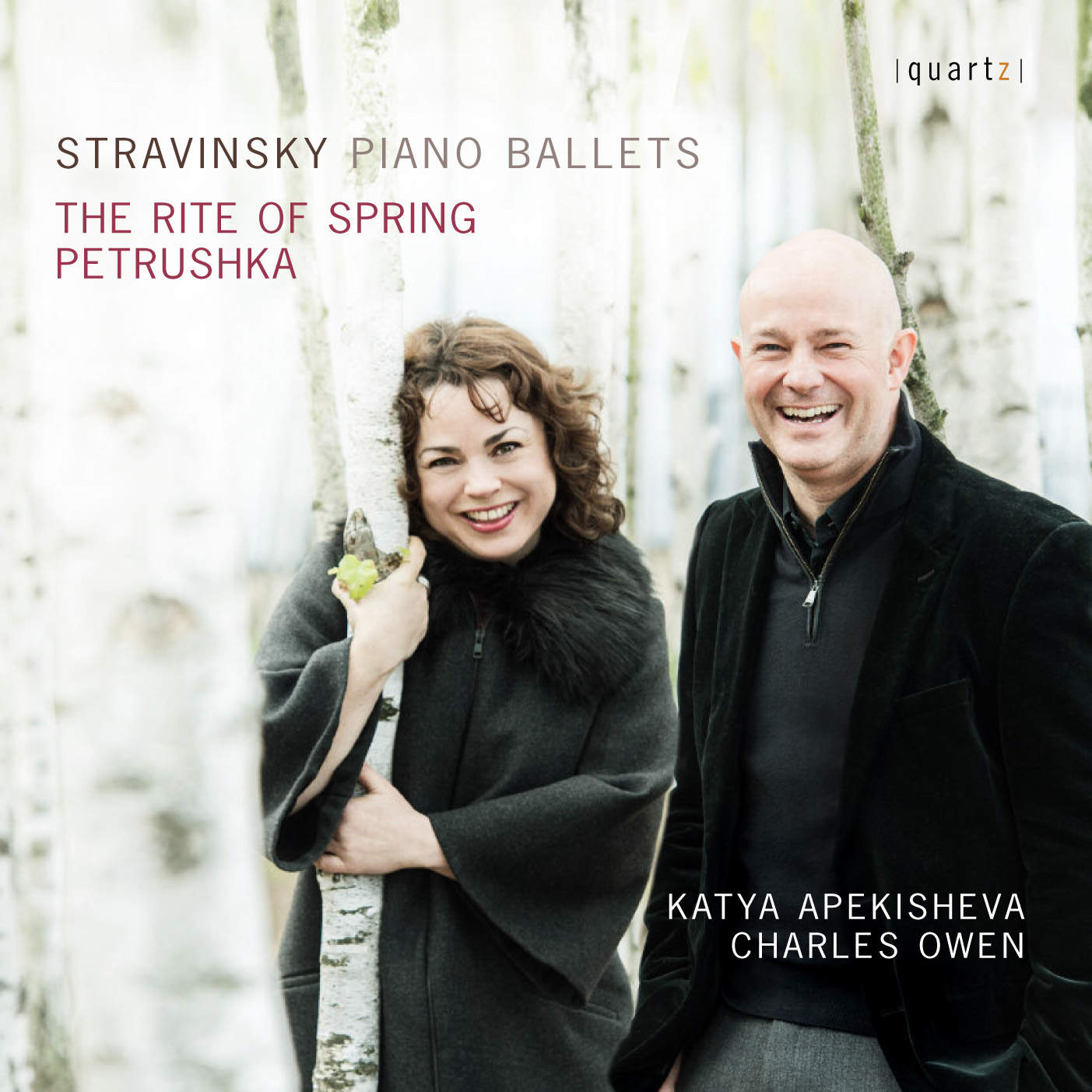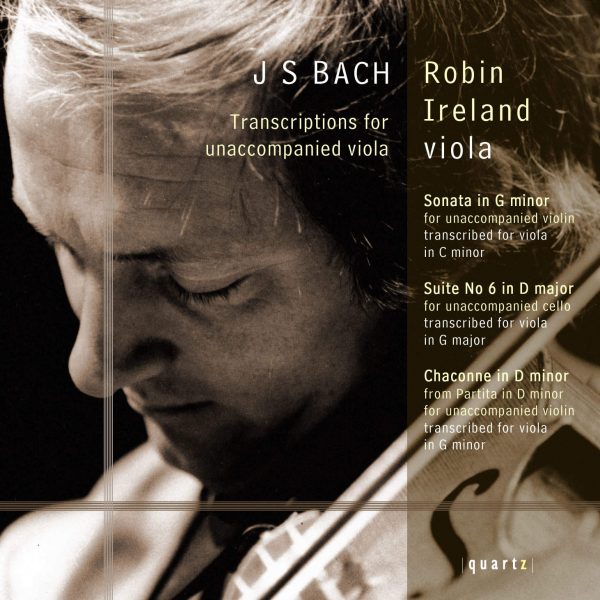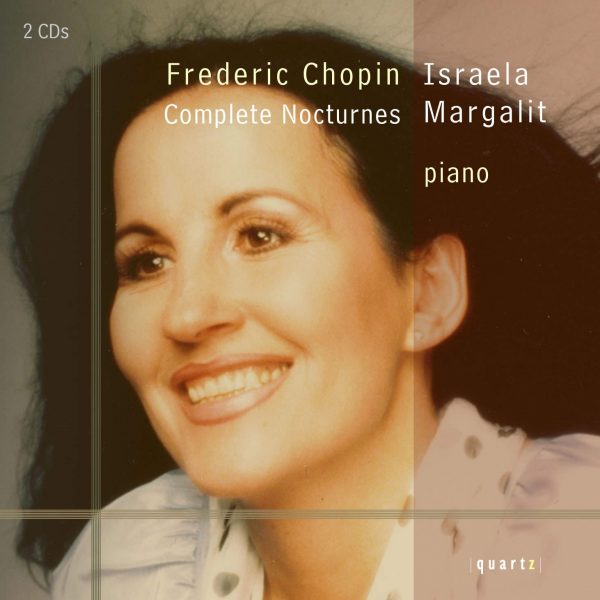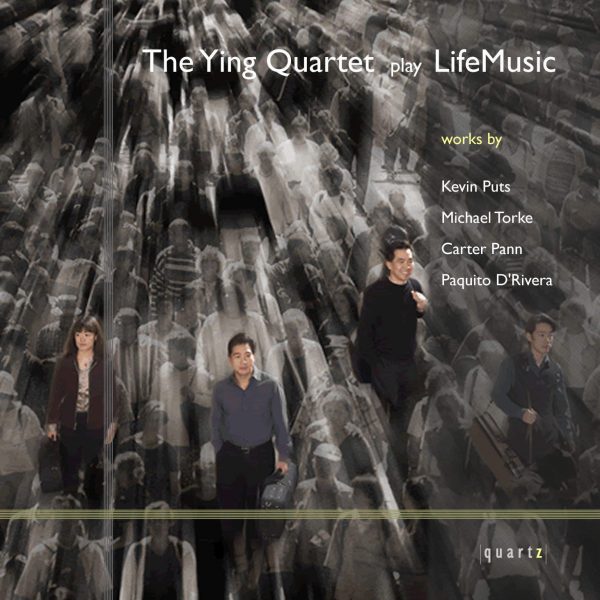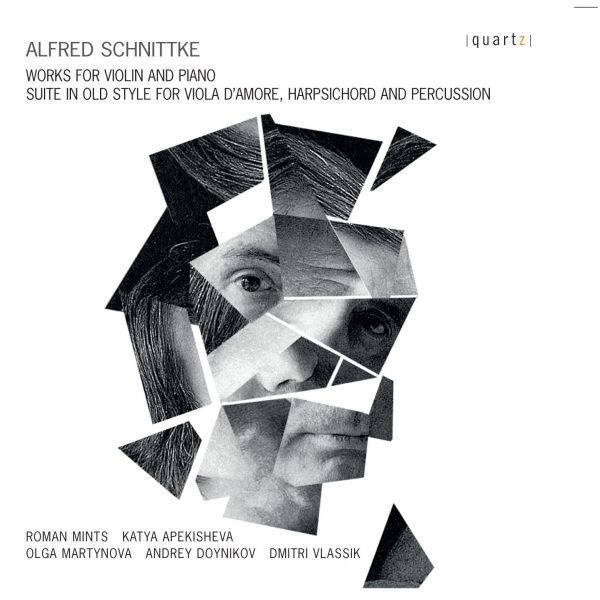Stravinsky Piano Ballets
£5.99 – £11.99
Stravinsky Piano Ballets
Petrushka
The Rite of Spring
According to Stravinsky, Petrushka started out as ‘an orchestral work with the piano playing the most important part – a kind of konzertstück.’ It was the impresario Serge Diaghilev, founder of the Ballets Russes, who persuaded him to transform this existing material into a full-length orchestral ballet score. Stravinsky almost invariably composed sat at the piano – the shape of his ideas was determined by the instrument’s essentially percussive nature. In the case of Petrushka, the title character’s distinctive harmonic profile rose directly from the juxtaposition of two chords based respectively on the keyboard’s white and black notes. The piano-duo version is therefore no mere arrangement but the original source out of which the orchestral score was fashioned.
About This Recording
PETRUSHKA
According to Stravinsky, Petrushka started out as ‘an orchestral work with the piano playing the most important part – a kind of konzertstück.’ It was the impresario Serge Diaghilev, founder of the Ballets Russes, who persuaded him to transform this existing material into a full-length orchestral ballet score. Stravinsky almost invariably composed sat at the piano – the shape of his ideas was determined by the instrument’s essentially percussive nature. In the case of Petrushka, the title character’s distinctive harmonic profile rose directly from the juxtaposition of two chords based respectively on the keyboard’s white and black notes. The piano-duo version is therefore no mere arrangement but the original source out of which the orchestral score was fashioned.
During April 1911, by which time most of the score was complete, Diaghilev assembled in Rome a staggering array of creative talent charged with the job of making Petrushka a reality. Apart from Stravinsky himself, the star-studded production team included dancer-choreographers Vaclav Nijinsky and Michel Fokine, and artist designer Alexandre Benois, the work’s dedicatee and co-author. Nijinsky took the title role at the work’s premiere, conducted by Pierre Monteux at Paris’s Théatre du Chatelet on 13 June 1911, and received a standing ovation.
The resulting triumph gave Stravinsky “the absolute conviction of my ear just as I was about to begin The Rite of Spring.” Always seeking felicitous solutions to the challenges of orchestration, Stravinsky continually tweaked and fine-tuned Petrushka until in 1947 his various revisions came to fruition in a freshly-revised score that he considered definitive and which is performed here.
In order to suggest various groups of people at a Shrovetide fair, Stravinsky creates a collage effect during the opening scene, with several strands of music co existing at various different levels at the same time. As particular characters move into focus so the music associated with them (mostly snatches of popular Russian folksong) emerges accordingly out of the busy textures.
A sudden change of mood introduces the Charlatan, who reveals three puppets: the Ballerina, the Blackamoor and Petrushka “the Pierrot of the Slavic world, or as
Stravinsky described him, ‘the eternal unhappy hero of every fairground in every country.’” The Charlatan charms them into life with his flute and they dance one of the most invigoratingly joyous episodes Stravinsky ever penned.
An insistent rhythm (played by a backstage military and two-headed drum in the orchestral score) links directly into the second scene in Petrushka’s room, where the mood turns introspective as we share his despair at his ungainliness and grotesque appearance. For a moment he allows himself the sweet delusion that the Ballerina has fallen in love with him, only to be tormented by her repulsed cries of rejection. The Third Scene moves to the Blackamoor’s room, where we see the Ballerina seduce him with her feminine wiles, before the two are violently interrupted by the furiously jealous Petrushka. The enraged Blackamoor promptly chases him away. The final scene returns us to the Shrovetide fair of the opening, the hustle and bustle enlivened by a series of brief cameos for the wet-nurses, a performing bear, a bibulous merchant scattering bank notes amongst the crowd, a group of coachmen and some masqueraders disguised, amongst other things, as a goat, a pig and a devil. Suddenly a commotion breaks out in the Charlatan’s puppet theatre and we see the Blackamoor strike Petrushka dead with his scimitar. The Charlatan moves quickly to reassure the astounded onlookers that Petrushka was merely a puppet after all, but as the commotion dies down and the Charlatan is left to clear up all the mess, we see the ghost of Petrushka appear on the roof of the theatre, jeering and mocking.
THE RITE OF SPRING
“No one had heard music like it before; it seemed to violate all the hallowed concepts of beauty, harmony, tone and expression. Never had an audience heard anything so brutal, savage, aggressive and apparently chaotic; it hit the public like a hurricane, like some uncontrollable primeval force”. So wrote Roman Vlad following the Paris premiere of The Rite of Spring on the 29 May 1913. Backstage, Diaghilev had been issuing instructions to the lighting crew to raise and lower the house lights in a halfhearted attempt to maintain order, while Nijinsky desperately tried to keep the dancers on track by furiously beating time with his fists. Yet despite their best efforts the performance ended in chaos, with those for and against hurling abuse at each other, leaving the players and conductor Pierre Monteux to make a quick exit. In the audience that night was Italian opera supremo Giacomo Puccini, who dismissed the Rite as “the creation of a madman” in fairness there were many at the time who agreed with him. “It has no relation to music at all as most of us understand the word,” noted one critic following the London premiere five weeks later. “A crowd of savages…might have produced such noises,” commented another. Stravinsky later reasoned that he had been merely ‘the vessel through which the Rite passed,” implying that its creation had been a historical musical imperative.
Yet things had started innocently enough two years before. While he was putting the finishing touches to The Firebird, Stravinsky had a particularly vivid dream: “I saw in my imagination a solemn, pagan rite,” he recalled. “Sage elders, seated in a circle, watched a young girl dance herself to death. They were sacrificing her to propitiate the god of spring.” Out of this primeval vision arose a score that liberated rhythm as an organising and generating force, shattering preconceptions of melodic propriety by focusing on music’s percussive potential. Stravinsky swept aside Germanic principles of organic musical development, evoking the scenario’s primitivist landscape with granitic blocks of sound, ingeniously welded together in multifarious combinations. Once again, the piano was the medium through which Stravinsky realised his latest masterwork, and it was the piano duo version that was published initially in 1913. It would be another eight years before the full orchestral score rolled off the presses.
The Adoration of the Earth opens mysteriously with a slowly-unwinding Lithuanian folk-tune, evoking a prehistoric landscape populated by isolated groups of young
men and women. An overriding sense of threat erupts suddenly in the girls’ ritualistic cavorting to the sound of primitivist stamping rhythms. Thoroughly aroused the men carry the girls off and although the arrival of the Spring rounds brings some temporary relief, the music’s dragging ostinatos ultimately find release in another feverish dance as two rival tribes face each other down. An old sage briefly restores order before the frenzied Dance of the Earth brings the first part to a shattering conclusion.
Part two opens with an extended “Introduction” whose half-lit textures eerily suggest the arrival of a new dawn as the young girls gather around a fire, ominously aware that one of them is to be sacrificed as an offering to the Earth. A girl is eventually chosen triggering a sequence of primeval, ritualistic dancing that forces the musical tension to near-bursting point. The Chosen Victim’s final Sacrificial Dance climaxes in a devastating explosion of hypnotic self-destruction.
Julian Haylock
Track Listing
- Petrushka: The Shrovetide Fair
- Petrushka: The Enchantment
- Petrushka: Russian Dance
- Petrushka: Petrushka's Room
- Petrushka: The Blackamoor's Room
- Petrushka: Dance of the Ballerina
- Petrushka: The Ballerina and the Blackamoor
- Petrushka: The Shrovetide Fair
- Petrushka: Dance of the Nursemaids
- Petrushka: The Bear and the Peasant
- Petrushka: The Jovial Merchant with Two Gypsy Girls
- Petrushka: Dance of the Coachmen and Grooms
- Petrushka: The Masqueraders
- Petrushka: The Fight - The Moor and Petrushka
- Petrushka: Death of Petrushka
- Petrushka: The Police and the Juggler
- Petrushka: Apparition of Petrushka
- The Rite of Spring: Introduction
- The Rite of Spring: The Augurs of Spring - Dances of the Young Girls
- The Rite of Spring: Ritual of Abduction
- The Rite of Spring: Spring Rounds
- The Rite of Spring: Ritual of the Rival Tribes
- The Rite of Spring: Procession of the Sage
- The Rite of Spring: Dance of the Earth
- The Rite of Spring: Sacrifice - Introduction
- The Rite of Spring: Mystic Circles of the Young Girls
- The Rite of Spring: Glorification of the Chosen One
- The Rite of Spring: Evocation of the Ancestors
- The Rite of Spring: Ritual Action of the Ancestors
- The Rite of Spring: Sacrificial Dance (The Chosen One)
